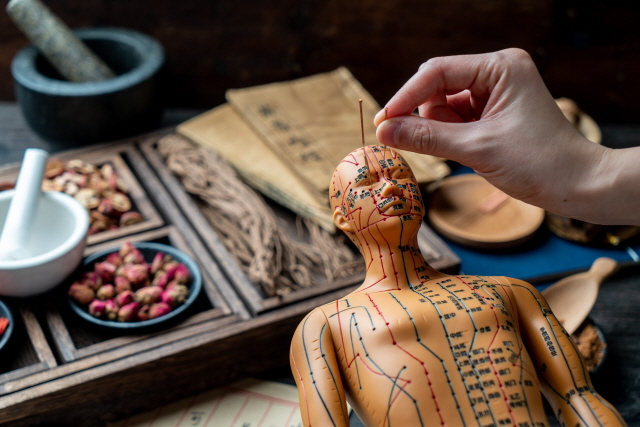
Referring to existing clinical papers could be a good start
By Winston Lee L. Ac, Ph.D., KMD
There is something called ‘Scalp Acupuncture’ among the various acupuncture techniques in Eastern Medicine. Put acupuncture is placed on the head’s scalp, not the hands, legs, or back. Scalp acupuncture is often used clinically because it is effective for headaches and various psychiatric, digestive, and cardiovascular diseases. This acupuncture technique is also widely used for research purposes, especially in hospitals and schools. Unlike other acupuncture methods, it is advantageous because it can be placed at the same acupuncture point without being greatly influenced by the practitioner’s experience, education level, or special technique.
As I mentioned above, there are many purposes for using scalp acupuncture, but among them, it is used quite a lot for pain caused by stroke. There are many papers on this worldwide, but I will introduce one paper that can be referred to in clinical practice.
‘Chronic Central Post-Stroke Pain Treated with Scalp Acupuncture and Traditional Korean Medicine: A Case Report’
In this case, a patient six years after the onset of cerebral infarction was admitted to the hospital and received intensive Eastern medicine treatment for four weeks while simultaneously receiving general Western medications. The patient complained of numbness, weakness, and chronic pain in the left limb. The acupuncture needle size used to treat the patient was 0.25X 3.0 mm, and treatment frequency was once a day, at 9:00 in the morning, from Monday to Friday. The acupuncture point was used as a standard set by WHO(World Health Organization), and acupuncture treatment was performed at MS1, MS5, MS10, and MS11. After acupuncture, electroacupuncture was performed for 15 minutes. At this time, scalp acupuncture was used, and the acupoints of GV21, GB20, LI11, LI10, TE5, LI4, SP10, ST34, ST36, GB34, GB39, and LR3 were used simultaneously. At the same time, herbal medicine such as Soonkihwalwheltanggami and Gyeji jakyakjimo-tang were used. In Korea, it is very common for Cerebral Infarction patients to be admitted to an Eastern medicine hospital and receive both Western and Eastern treatment at the same time.
After four weeks of treatment, the patient’s numbness of the head area and the difference in grip force of both hands were significantly improved. And the sleep disorder was also improved. It was also confirmed that the overall pain level was improved by 50% at the time of discharge compared to the time of hospitalization. In addition, after the hospitalization treatment, the patient could walk without a cane, unlike the first time.
MS1, MS5, MS10, and MS11, where the scalp acupuncture is placed, are located on the frontal, parietal, and temporal bones. This treatment technique can be done the same way at a local clinic, not a hospital, and does not require any special additional training if you are a licensed acupuncturist who has already received education and training at an eastern medical school and has some experience after receiving a license. However, unlike hospitalized patients, in the case of outpatient treatment, there is a barrier in that it is difficult to treat intensively every day, as in the case report above. In this case, it is necessary to educate the patient to visit the clinic as often as possible, even 2 or 3 times a week. If the frequency is 2 to 3 times a week instead of 5 times a week, it is recommended to set a treatment period of 8 weeks instead of 4 weeks, as in this paper.
When considering treatment protocols at a clinic, referring to existing clinical papers and case studies is more convenient. In addition, since it is based on a thesis that has gone through an objective and scientific verification process, you can have considerable confidence in its effectiveness, and it is easy to convince patients in the clinic.
































